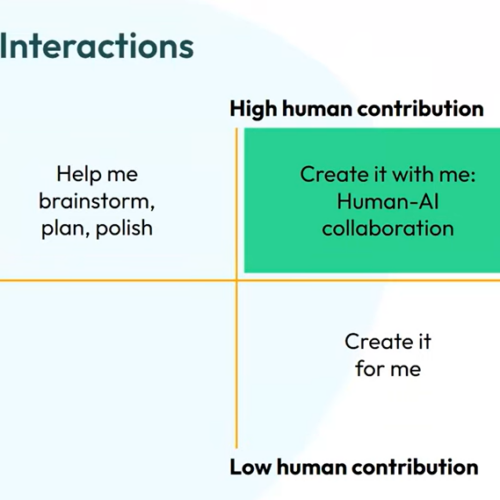Research-Based Tips on Incorporating Laptops & Devices
Perhaps not surprisingly, recent studies suggest that students’ attention and learning may be impaired when they use their electronic devices in class. However, these same studies also find that thoughtfully integrating the use of laptops into course-related activities may actually improve student learning and engagement.
These findings on the powers and pitfalls of students’ tech tools in the classroom reinforce the importance of anticipating, and thinking carefully about, the use of laptops and other devices when designing a course. Here are some suggestions for incorporating student use of laptops or other mobile devices in class:
- At the course-design stage, you might consider whether there are in-class activities—such as database research, quantitative calculations, manipulation of software, writing, or annotation of texts or images—that students could accomplish using laptops, tablets, or other devices. Even though you may not be able to count on every student coming to class with a laptop, for example, you could design small-group activities that require students to have one laptop for every 2-3 people (depending on the activity and its purposes). Designating specific days in which you will do these activities, or making them a regular part of every class, will encourage your students to bring laptops to class. At the same time, do not assume that all students have a laptop, and make it clear that they can participate without one.
- In addition, you might investigate applications that allow students to ask or answer questions in class by transforming their smart-phones, laptops, or tablets into “response systems.” Examples include twitter, Google chat, socrative, or wu-texter (an application designed by WUSTL Professor of Computer Science Ron Cytron).
- Consider reviewing research on laptops in the classroom with students, noting the potential for distraction and impaired learning. For one example of this approach, see Curzan (2014).
- Consider encouraging students to take notes with pen and paper, rather than on a laptop, since doing so may help improve conceptual learning (Mueller and Oppenheimer, 2014).
- When creating course policies related to the use of electronic devices in the classroom, you might consider the following options: 1) encourage students to limit the use of laptops or devices for anything but course-related activities; 2) create a laptop-free zone near the front of the class, to minimize the possibility of distraction for students who choose not to use a laptop; and 3) bar the use of devices altogether, or during specific portions of the class. Of course, policies you develop will depend on several factors, including the course objectives, the size of the class, and your own teaching style. These ideas, and others, are discussed in detail in Developing Course Policies on Laptops and Mobile Devices.
- It is essential to take time at the beginning of the semester to explain these policies and the rationale behind them. That rationale may include a goal in which you and your students are mutually interested in attaining, such as maintaining a classroom environment in which all students have an equal opportunity to learn. It may also be helpful to cite research that identifies the potential drawbacks and benefits of student use of laptops and other devices in the classroom.
Faculty who would like to discuss ideas for integrating in-class student use of technology into a course, or issues related to establishing course policies related to in-class use of mobile technology devices, may contact Beth Fisher, Director of Academic Services, or Gina Frey.
References
Curzan, A. (2014, August 25). Why I’m asking you not to use laptops. Chronicle of Higher Education. Retrieved from http://chronicle.com/blogs/linguafranca/2014/08/25/why-im-asking-you-not-to-use-laptops/.
Mueller, P. A. and Oppenheimer, D. M. (2014). The pen is mightier than the keyboard: Advantages of longhand over laptop note taking. Psychological Science 25(6): 1159-1168.

This work is licensed under a Creative Commons Attribution-NonCommercial-NoDerivatives 4.0 International License.




